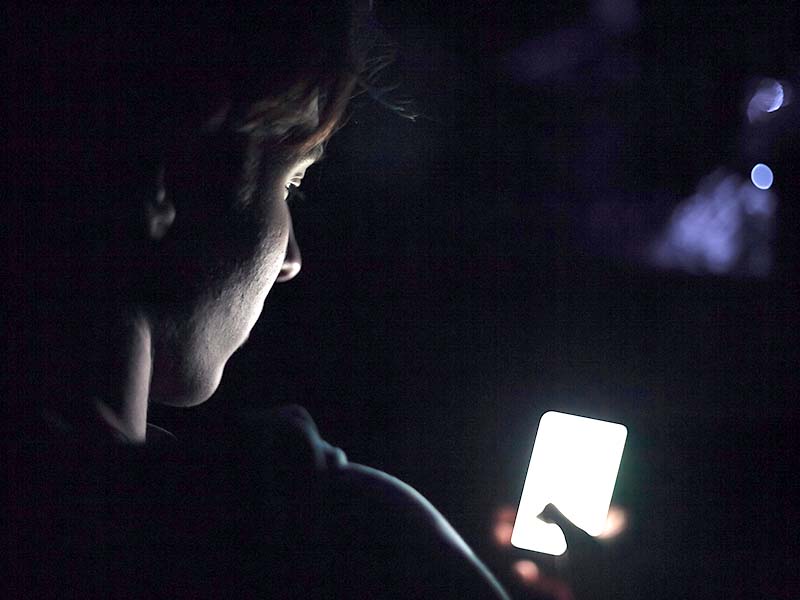A piece of the pandemic’s impact and legacy that we cannot ignore is screen time. Throughout the COVID-19 pandemic, Americans relied on technology more than ever to continue working, going to school, checking in with health care providers and connecting with family and friends. Recreational screen time for teens skyrocketed during the pandemic.
Screen Time – Friend or Foe?
Students of all ages ranging from pre-K to college had no choice about how they would learn when the pandemic arrived here. Education came through a screen. Zooming was done from the start of the school day, usually beginning before 9 a.m. and going through the end of the day at 3 p.m. In-person classes were halted with mandates to keep schools closed through the end of the 2019-2020 school year. Closures affected approximately 55 million students in 124,000 public and private schools across the nation. Summer provided a bit of a reprieve as researchers scrambled to develop an effective vaccine. As the school year of 2020-2021 began, many schools offered families choices of in-person learning, virtual learning or a combination or “hybrid” of the two.
Increased screen time was not only attributed to educational pursuits during the pandemic. This time gave producers an opportunity to create apps, games, programming, etc. to attract young and impressionable tweens and teens. And it worked. A recent study published in JAMA Pediatrics documented that screen time doubled from pre pandemic estimates of 3.8 hours per day to 7.7 hours for entertainment and recreation.
“Squid Game”
The streaming service Netflix added some 10 million subscribers during the pandemic. One of the hits, “Squid Game,” a South Korean drama TV series, is receiving lots of attention and parental concerns about how appropriate it is for children. As of November 2021, it claims to have reached the status of the streaming service’s most-watched series. So what is all the hype about? Blending “Survivor” and “Hunger Games”, this series uses some of the familiar and innocent games of youth, such as tug-of-war and red light, green light but adds a dimension of violence. Even though the show has been rated as TV-MA, indicating it may not be appropriate for teenagers under 17, younger children have been intently following this series. David Anderson, head of School and Community Programs at the Child Mind Institute, provided a description of the show, “The level of violence is horrifying,” continuing on with, “It’s a murder fest with the premise that out of over 400 participants, there can only be one survivor.” What do kids often do? They mimic what they see. Across playgrounds, school-age students are acting out what they are seeing on the screen.
Devious Licks
Educators and parents faced a challenging new year when school started back in September. Continuing to keep everyone safe when returning to in-person learning was enough to manage. Add to that return to normalcy, a new trend referred to as “Devious Licks.” A lick isn’t one of those wet extensions of affection from man’s best friend. Originating with a TikTok user, a “lick” represents something that has been successfully stolen from school. The trend targets soap dispensers along with other items such as fire extinguishers, signs, sinks, etc. and has spread across several states racking up over millions of views and leaving teachers totally exhausted. Social media is the match that can ignite a trend. What starts as one post behind a screen can end up resulting in theft, vandalism, damage and legal repercussions.
The Brain and Screens
Understanding how a series such as “Squid Game” or a trend such as “Devious Licks” can be so attractive to teens and gain incredible popularity really isn’t too difficult when one looks closely at the teenage brain. High scores on the SAT or ACT do not begin to equate with good judgment. It just isn’t something that can be accelerated no matter how great the desire may be.
Information gets processed differently with adults and teens. Adults rely on the prefrontal cortex, more commonly thought of as the rational part of the brain. Conversely, teens use the amygdala or emotional part of the brain to process information. Teens eventually catch up to adults, but the rational part of the brain is not fully developed until about 25 years old. That essential decision-making center of the brain that guides behavior is still developing through the teens. When social media bombards the teenage mind, which is still very much a work in progress, it is easy to see how certain programming and sites may be able to lure them into inappropriate and dangerous avenues. Good judgment is needed in order to make good choices.
Unplug
Our children may need us to lead the way and help them unplug from their devices. A child’s brain switches to passive mode when in front of a screen, and the addictive power of a screen cannot be ignored. Exposing the young to all the offline world offers takes some creative planning and a willingness to engage in some battles. Taking small steps such as keeping screens out of the bedroom, scheduling screen time, planning adventures outside, etc. may be effective ways to help children avoid growing so dependent on screens. Screens are here to stay, but they don’t have to be 24/7 in our lives.
Editor’s Note: As We Go to Press
Instagram has just announced new safety features for teens. The new features include “take a break” reminders when a user has been scrolling on the app for too long. Additional parental control features that give parents insight into their teens’ and tweens’ social media habits, the option to set limits and know when their teens report someone will launch in March 2022. “We want people to be able to take a break and have their time on Instagram be intentional and meaningful — irrespective of whether that means seeing less ads or not,” Meta spokeswoman Liza Crenshaw says. But experts are questioning the impact these features will have. Linda Charmaraman, director of the Youth, Media & Wellbeing Research Lab at the Wellesley Centers for Women, says that while Instagram, Facebook and Meta continue to refuse to share data and algorithms with outside researchers and auditors for review, it’s impossible to know the extent of the problem and whether these new features will actually make a difference to our kids and the impact social media has on them.
Josh Golin, executive director at Fairplay, a nonprofit organization that aims to end marketing targeted at children, says, “If you can’t be certain that your algorithms aren’t promoting and recommending harmful content to teenagers, then you shouldn’t use your algorithms on teenagers.”
Additional Information & Resources
- Understanding the Teen Brain
- Kids are Playing Squid Game at School
- No, Your Kids Probably Shouldn’t Watch Squid Game
- Is Squid Game Appropriate for Kids?
- What to Know About the ‘Devious Lick’ TikTok Challenge
- TikTok Challenge Gone Awry
- Screen time among teenagers during COVID more than doubled
- Kids who Watched Sesame Street did Better in School
- 9 Tips for Helping Your Child Unplug From Screens
- Detoxing From Social Media
- Media use and Brain Development During Adolescence
- When Is Your Brain Ready for Social Media?
- Why Social Media Is Not Smart for Middle School Kids
- Developing Social Media Literacy
- You Are What You Watch
Related
Quarantine = More Screen Time = Sore Eyes
10 Easy Ways to Cut Screen Time


